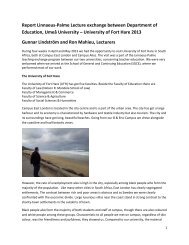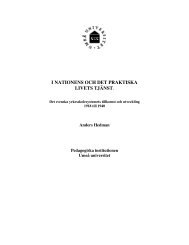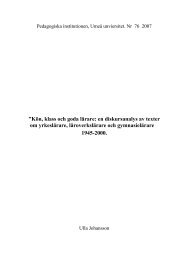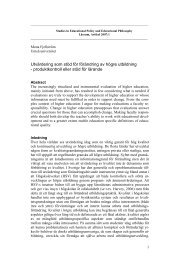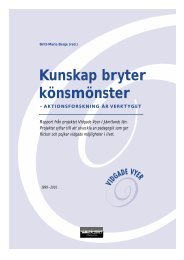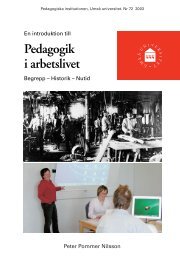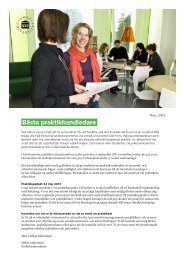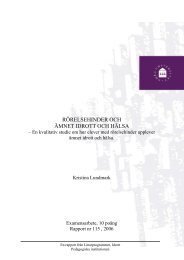IDENTITETSSKAPANDE I STUDENTFÖRENINGEN ULRIKA ... - DiVA
IDENTITETSSKAPANDE I STUDENTFÖRENINGEN ULRIKA ... - DiVA
IDENTITETSSKAPANDE I STUDENTFÖRENINGEN ULRIKA ... - DiVA
You also want an ePaper? Increase the reach of your titles
YUMPU automatically turns print PDFs into web optimized ePapers that Google loves.
S U M M A R Y<br />
The SAM members construct their ideal identity within the meritocratic<br />
discourse, in which the student is described as society’s future hope and as a<br />
person entitled to be both seen and heard. Student life will provide the qualifications<br />
that are required in order to assert oneself on the labour market, and it<br />
is devoted to activities that may be useful in working life. The involvement in<br />
the society means for example an opportunity to gain important organisational<br />
capital. The SAM members are also striving to raise the quality and status of the<br />
education and thereby the value of the symbolic capital that it provides. They<br />
describe themselves as energetic, committed, self-sacrificing and unselfish society<br />
members. They claim their readiness to work for everybody’s best interests,<br />
and thereby they construct themselves, in accordance with the logic of the<br />
meritocratic discourse, as even more rightful and legitimate holders of future<br />
top positions. Through the work in the society they also get an opportunity to<br />
make contacts for the future, and they try in various ways to increase their<br />
social capital. This also benefits their fellow students to some extent, but the<br />
board members themselves reap the greatest benefits.<br />
The SAM members distinguish themselves above all from the students in science<br />
and technology, whom they describe as negative others. They contrast<br />
their own neat designer clothes to the technologists’ overalls, and see themselves<br />
as intellectuals, while the technologists are associated with manual labour. They<br />
describe their own parties as more cultivated than the ‘boozing’ that the technology<br />
students go in for. With the aid of the negative others, they can construct<br />
themselves as rightful future holders of power.<br />
The SAM members’ representations of the ideal identity may be seen as a manifestation<br />
of (upper) middle-class masculinity. In this perspective it is possible<br />
to understand the ideological dilemmas that arise for the women who try to<br />
represent themselves in accordance with the meritocratic discourse. The female<br />
symbolic gender is associated with a general inability to be rational and to focus<br />
on the right work tasks. Ambitious women also risk being perceived as insufficiently<br />
self-sacrificing and hence even as unpleasant. The women who try to<br />
form themselves as future holders of power contribute, however, to the redefinition<br />
of this identity to some extent. For students with a working-class background,<br />
the ideological dilemmas manifest themselves as general insecurity<br />
about the university environment’s implicit norms and rules and their own<br />
ability to understand and apply these norms correctly, but they do not feel alien<br />
in the SAM society. They also do their best to construct themselves in accordance<br />
with the ideal identity.<br />
The MED members’ ideal identity may also be seen as an activation of the<br />
meritocratic discourse, as the students are prepared to serve society. The MED<br />
members do not describe themselves, however, as the hope of the nation, as<br />
171



